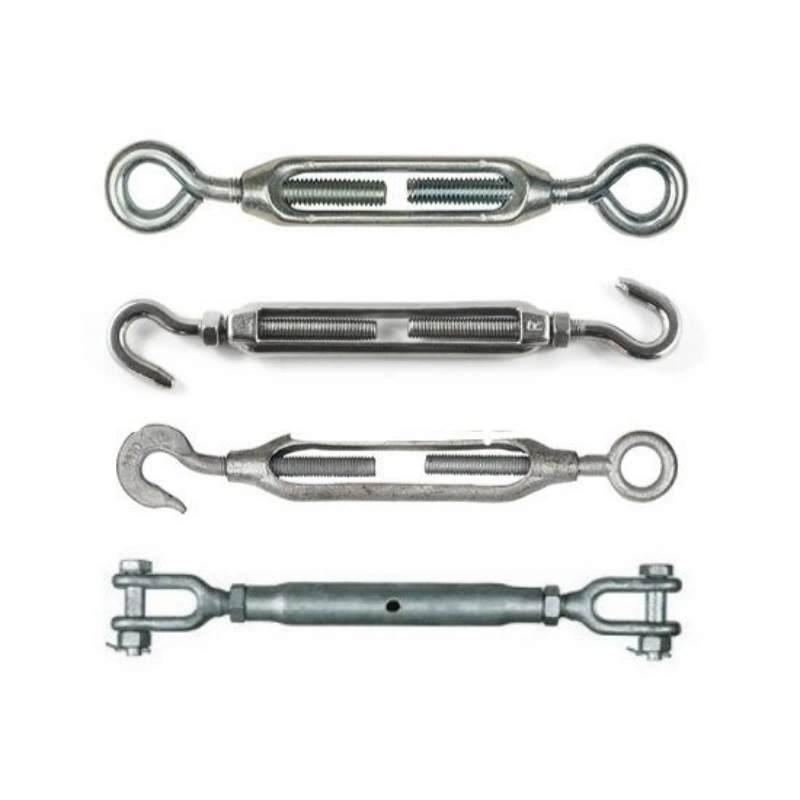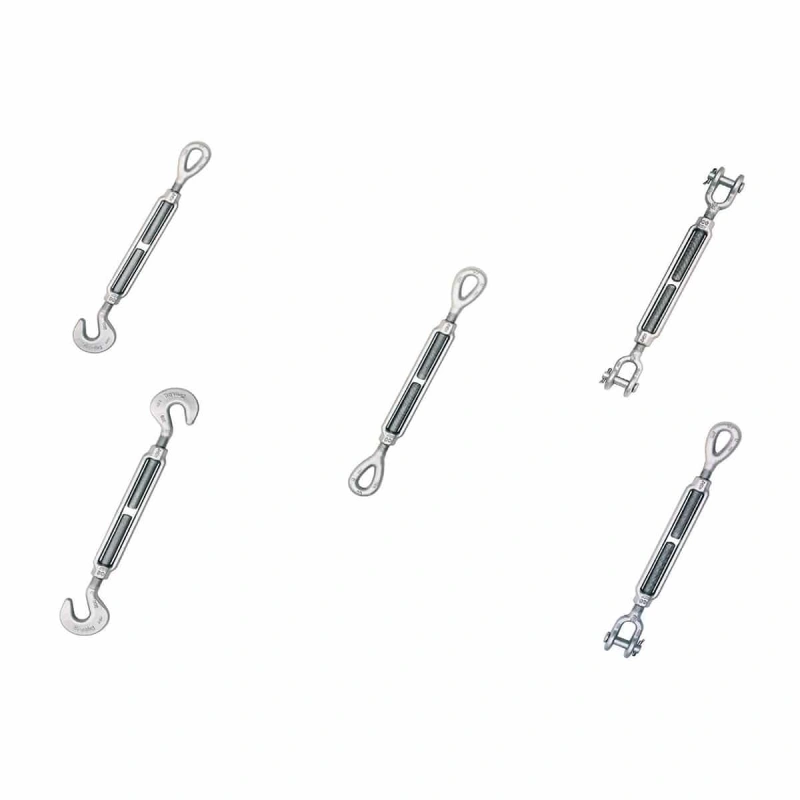You rely on the chain sling safety factor to protect your lifting operations. The safety factor for alloy steel chain slings is typically set at 4:1, meaning the sling’s strength is four times greater than its rated load. This margin helps you avoid accidents, equipment damage, and risks to workers.
Powerful Machinery’s certified chain slings meet global standards, offering reliable performance and rigorous testing. The table below shows how G80 lifting chains compare to uncertified alternatives.
Feature | G80 Lifting Chain | Uncertified Alternatives |
|---|---|---|
Manufacturing Standards | Meets global standards | No standardized manufacturing |
Testing | Rigorous, documented | Often lacks testing |
Traceable Heat Treatments | Yes | No |
Minimum Tensile Strength | 800 MPa | Varies, often lower |
Performance Under Conditions | Reliable in harsh environments | Uncertain performance |
Key Takeaways
The standard safety factor for chain slings is 4:1, meaning the sling’s strength is four times greater than its rated load. This helps prevent accidents and equipment damage.
Always inspect your chain slings before use. Regular checks can identify wear and damage, ensuring safe lifting operations.
Understand the working load limit (WLL) for your slings. Calculate it based on the type of sling and the angle of lift to avoid overloading.
Follow safety regulations and standards in your region. Compliance ensures that your lifting operations are safe and reliable.
Proper maintenance of chain slings extends their lifespan and enhances safety. Store them correctly and clean them regularly to prevent corrosion.
Chain Sling Safety Factor
What Is a Safety Factor?
You need to understand the safety factor before you start any lifting operation. The safety factor gives you a margin of safety between the maximum load a piece of equipment can handle and the load you actually lift. This margin protects you from unexpected failures and accidents.
The safety factor provides a necessary safety margin for lifting equipment.
It prevents the equipment from being overloaded, which could lead to breakage or failure.
Understanding the safety factor is essential to avoid dangerous accidents during lifting operations.
The safety factor of a lifting hook is the ratio of the hook’s ultimate strength to the maximum working load it is designed to handle. This ratio acts as a safety net, making sure your equipment can handle forces greater than those you expect in normal use. You rely on this principle every time you lift a load.
The Standard Safety Factor for Chain Slings Is?
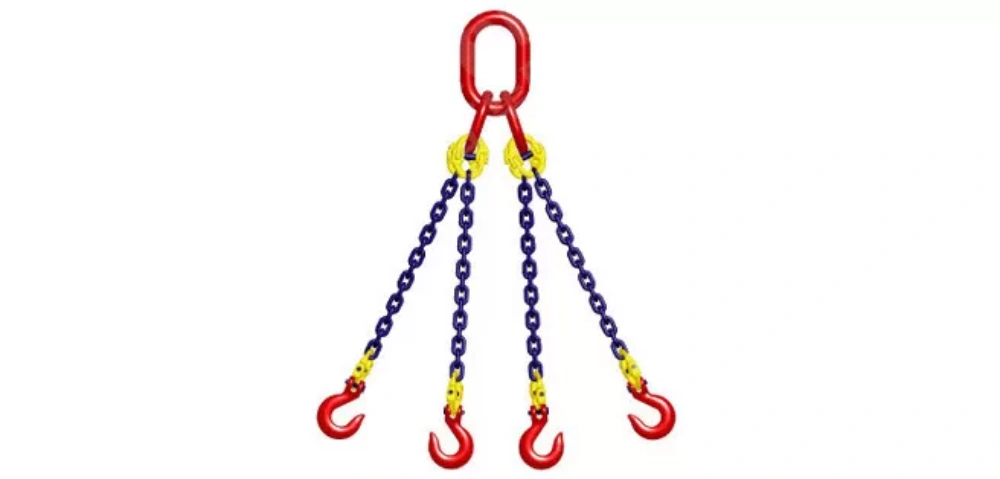
You must know the standard safety factor when you select chain slings for your project. In most industrial applications, the chain sling safety factor is set at 4:1. This means the sling’s breaking strength is four times higher than its rated working load. This standard helps you avoid overloading and keeps your lifting operations safe.
The safety factor for chain slings changes depending on the angle at which you use them. As the angle increases, the tension on each sling leg also increases. For example, if you use multiple slings at a 150° angle, a 1-ton load can put up to 6 tons of strain on each sling. You must choose slings rated for these higher loads to stay safe.
Safety factor standards can differ by region:
In North America, a common safety factor for general lifting and rigging is 5:1.
In Europe, safety factors may vary, especially for equipment designed for lifting people, which can require a safety factor of 10:1 or higher.
In Asia, the safety factors can be lower for applications like simple pulling or lashing, reflecting the principle of ‘as low as reasonably practicable’ (ALARP).
You should always check the regulations and standards that apply to your location and industry.
Minimum Design Factor for Chain Slings
You must use chain slings that meet or exceed the minimum design factor required by international standards. The working load limits for chain slings are based on a design factor of 4:1, as required by ISO standards. For safety reasons, each chain and sling is rated with this 4:1 design factor.
Powerful Machinery’s chain slings meet strict safety standards, including ANSI, NACM, ASTM, and OSHA requirements. This compliance ensures you can trust their products for overhead lifting operations.
Here is a quick look at how Powerful Machinery’s chain slings comply with major standards:
Specification | Requirement | Compliance |
|---|---|---|
OSHA | Yes | Meets |
NACM | Yes | Meets |
ASTM | Yes | Meets |
ISO | Yes | Meets |
Design Factor | 4:1 | Exceeds |
You get chain slings made from Grade 100 or higher alloy steel, which offers about 25% more strength than Grade 80 slings. Each chain link is tested to confirm its load capacity. Rated capacities for Alloy Steel Chain slings are based on a design factor of 4 per ASME B30.9.
This design factor is crucial for calculating the rated capacities of the slings. Each sling must be marked with individual identification for safety.
Tip: Always check the identification and certification markings on your chain slings before use. This step helps you confirm that your equipment meets the required safety factor and design standards.
Safety in Lifting Operations
Why Safety Factor Matters?
You must understand why the safety factor is critical in every lifting operation. The chain sling safety factor gives you a margin that protects against unexpected failures. When you use lifting chains, you rely on their rated capacity and breaking strength to keep loads secure.
Ignoring the safe working load can lead to dropped loads, injuries, and damage to valuable assets. Every piece of lifting equipment has a maximum load it can safely handle.
Exceeding these limits can cause catastrophic failures. You should always plan your lifts, inspect your equipment, and follow the safety factor to maintain a safe work environment.
Common hazards in lifting operations include:
The load drops when the load is not secured properly.
Equipment failure from overloading or using damaged lifting chains.
Slipping or snagging of chains during movement.
Inadequate training for operators.
Electrical hazards with electric chain hoists.
These risks show why you must respect the chain sling safety factor and never compromise on safety.
Risks of Overloading Chain Slings
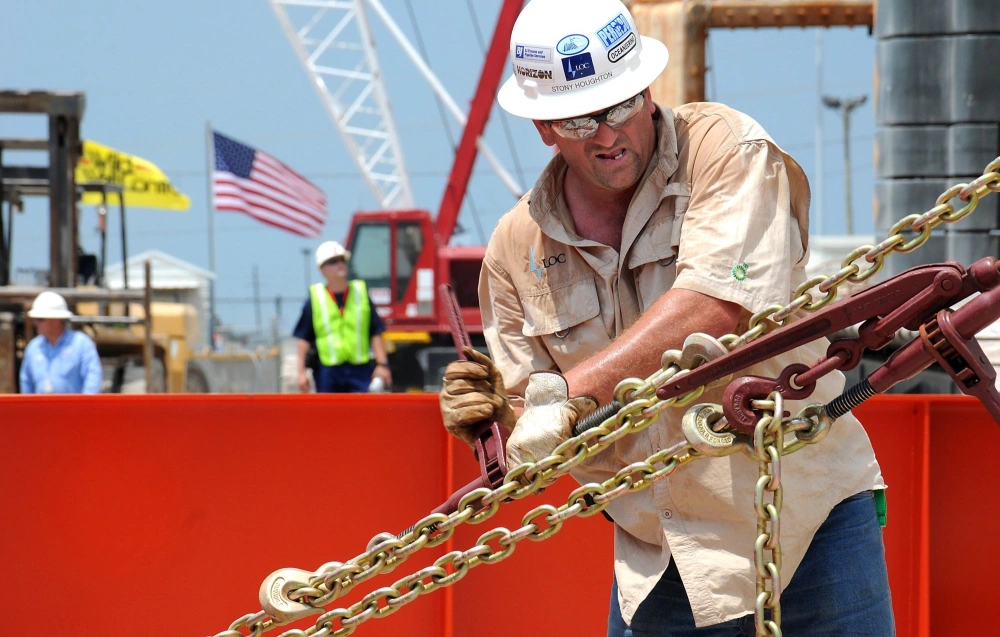
Overloading chain slings puts you and your team at risk. When you exceed the rated safety factor, you increase the chance of instant equipment failure. Even a single overload can permanently damage the chain links, making them unsafe for future use.
Overloading a chain sling beyond its rated capacity can cause instant failure. Even a single overload can cause permanent damage to the chain links that cannot be repaired.
You should always check the working load limit and never push your lifting chains beyond their designed breaking strength.
Powerful Machinery’s Safety Commitment
You want assurance that your equipment meets the highest standards. Powerful Machinery’s chain slings offer advanced safety features and strict compliance with international regulations.
The company uses innovative materials and technologies to ensure each sling withstands extreme conditions. Regular inspections help you identify wear and damage early, reducing risks and ensuring reliable operation.
Safety Feature | Description |
|---|---|
Compliance with international standards | Chain slings comply with EN 818-2 and ISO 6082, ensuring they meet recognized safety regulations. |
Regular inspection | Regular checks help identify wear and damage, reducing risks and ensuring reliable operation. |
Advanced materials and technologies | The use of innovative materials allows slings to withstand extreme conditions, enhancing safety. |
Powerful Machinery’s commitment to safety means you can trust their lifting chains for every project. You get certified products that help you prevent accidents and protect your team.
Applying Safety Factor to Chain Slings
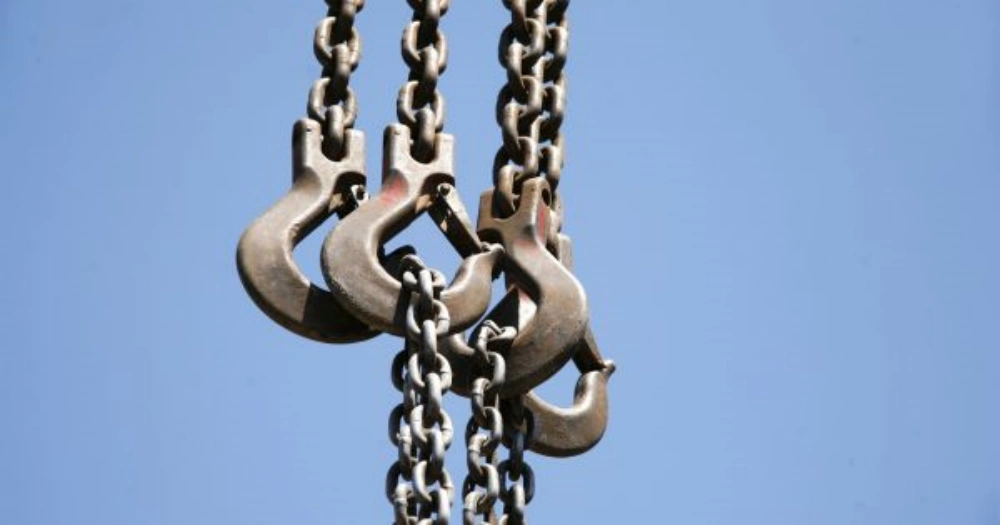
Determining Working Load Limit
You need to calculate the working load limit before you start any lift. This value tells you the maximum weight your lifting chains can safely handle. To determine the working load limit, follow these steps:
Identify the type of sling you will use—single, double, triple, or quadruple leg.
For a 2-leg sling, use this formula: WLL (ton) = 2 x WLL for single leg sling x cos(β), where β is the angle of the sling.
For 3- or 4-leg slings with evenly distributed loads, use: WLL (ton) = 4 x WLL for single leg sling x cos(β).
Always check that the master link can handle at least as much as the sling.
Use the maximum load you plan to lift and the angle of lift to select the right chain size from the specifications table.
If you use hooks in a shortening or choker application, reduce the working load limit by 20%.
Never exceed the rated limits and make sure the load is evenly distributed across all sling legs.
The safety factor plays a key role here. You get the working load limit by dividing the minimum breaking strength of the chain by the safety factor. This margin protects you from unexpected forces during lifting.
Inspection and Maintenance for Safety
You must inspect and maintain your lifting chains to keep every lift safe. Regular checks help you spot wear, damage, or corrosion before they cause problems. Here is a guide for inspection intervals:
Inspection Type | Frequency |
|---|---|
Initial Inspections | Before first use |
Frequent or Pre-Shift Inspections | Daily, weekly, or before every use/shift |
Periodic Inspections | Every 6 to 12 months |
Special Inspections | After incidents or repairs |
Proper maintenance extends the life of your chain slings and ensures safety. Store slings in a clean, dry place away from chemicals. Clean them with mild detergent and lubricate regularly to reduce friction. Always inspect before each use and follow a detailed inspection schedule.
Tip: Well-maintained lifting chains provide a better return on investment and help prevent accidents.
Real-World Use Cases
You see industry leaders around the world using safety factor guidelines every day. In the United States, OSHA requires employers to provide safe workplaces and use risk assessments for lifting. In Australia, Safe Work Australia focuses on equipment maintenance and worker training.
These practices show that regular inspection, proper storage, and strict adherence to the working load limit are essential for safe lifting.
Powerful Machinery’s chain slings meet or exceed international standards. You can trust their products for reliable performance in construction, shipping, and manufacturing. When you follow the safety factor and maintain your equipment, you protect your team and your investment.
You play a vital role in safe lifting operations. Follow these steps to protect your team and equipment:
Select chain slings based on load, grade, and environment.
Inspect every sling before use.
Secure loads with proper techniques.
Benefit | Explanation |
|---|---|
Reduced Incidents and Accidents | Safety practices lower workplace injuries and insurance costs. |
Increased Operational Efficiency | Risk management prevents delays and saves resources. |
Improved Worker Confidence | A safety culture boosts morale and job satisfaction. |
Regulatory Compliance | Meeting standards builds reputation and trust. |
Powerful Machinery’s certified chain slings deliver reliable breaking strength and meet global standards. Always apply safety factors and choose trusted products for every lift.
FAQ
What is the main advantage of using lifting chains over other lifting tools?
You get durability and flexibility with lifting chains. They handle heavy loads and resist wear. You can use them in harsh environments, which makes them a reliable choice for many industries.
How often should you inspect lifting chains for safety?
You should inspect lifting chains before each use. Regular checks help you spot damage or wear early. Follow a schedule for periodic inspections every 6 to 12 months.
Tip: Always record inspection dates and findings to keep your lifting chains safe.
Can you use lifting chains outdoors?
You can use lifting chains outdoors. They resist corrosion and perform well in tough conditions. Make sure you store them properly after use to extend their lifespan.
Environment | Suitability |
|---|---|
Indoor | Excellent |
Outdoor | Excellent |

